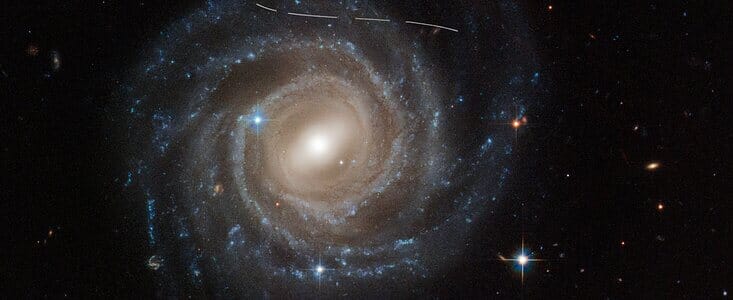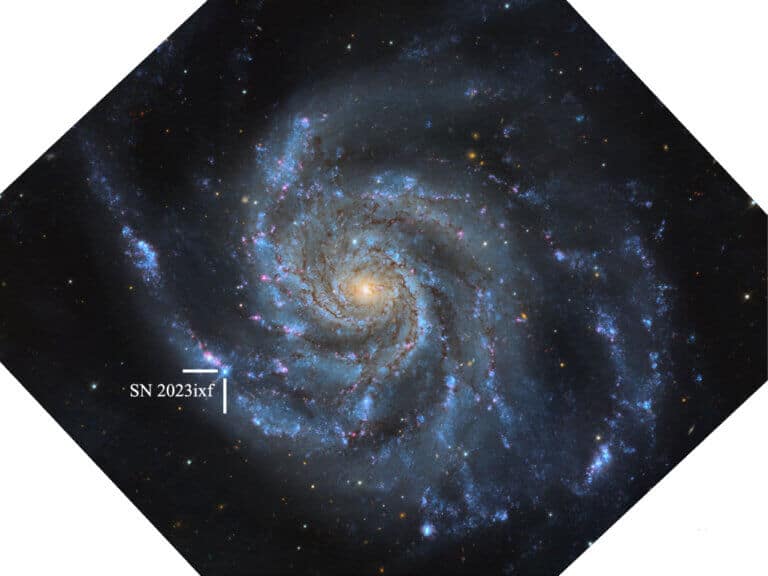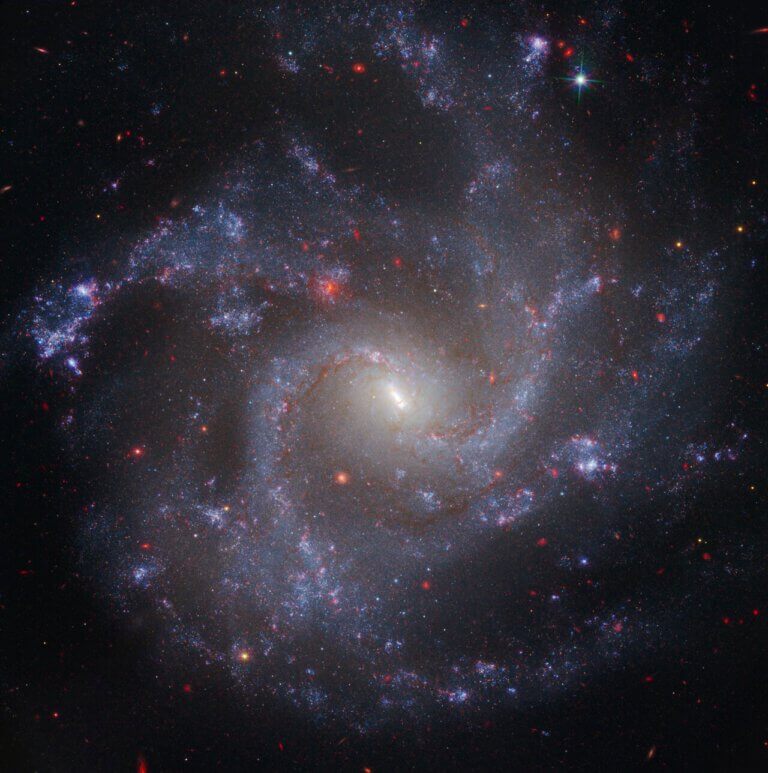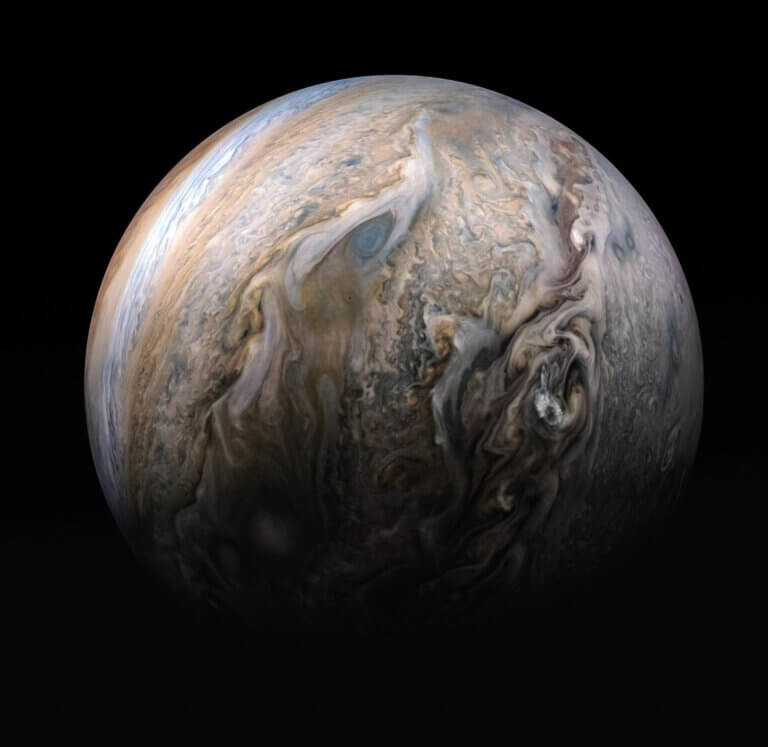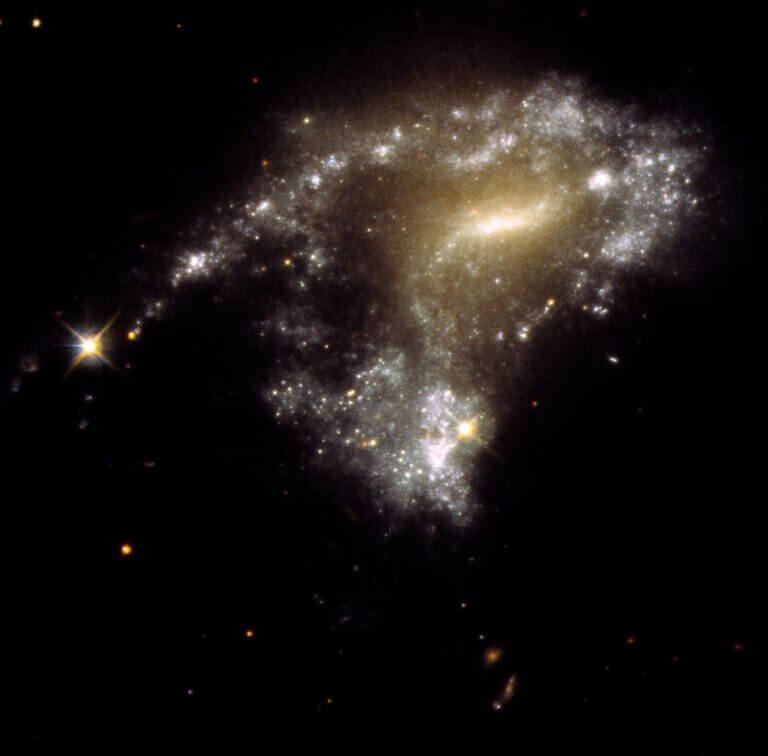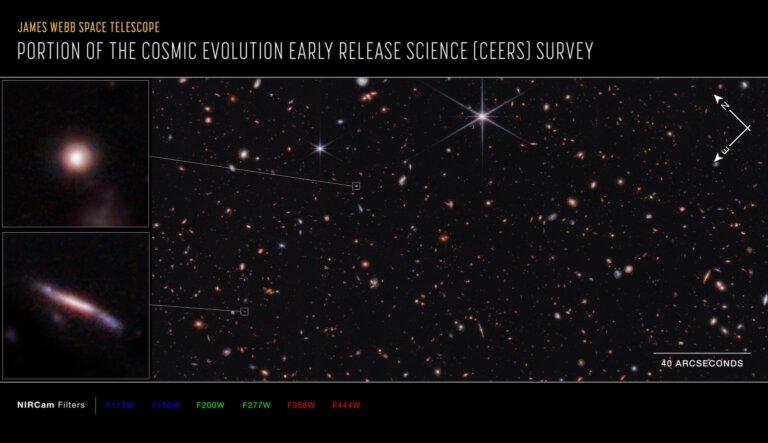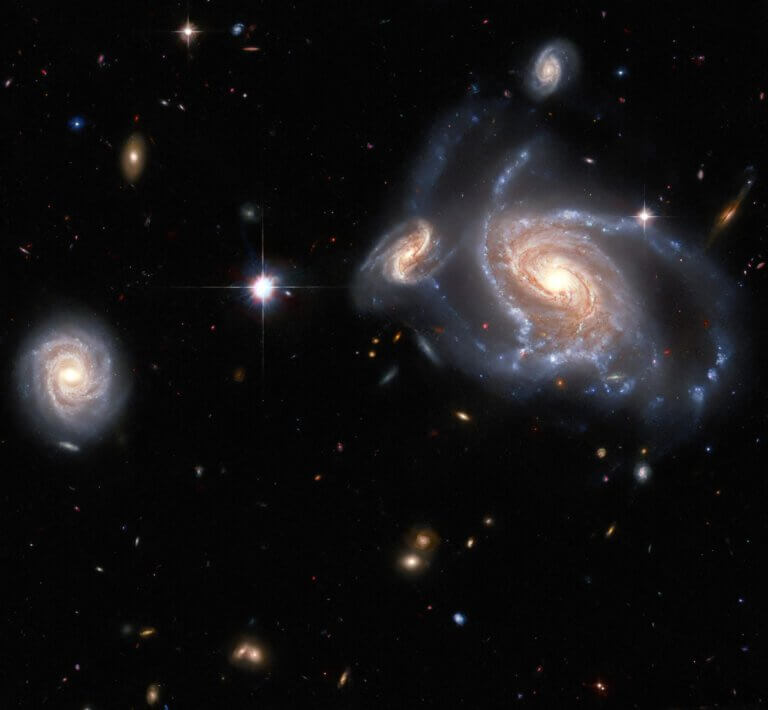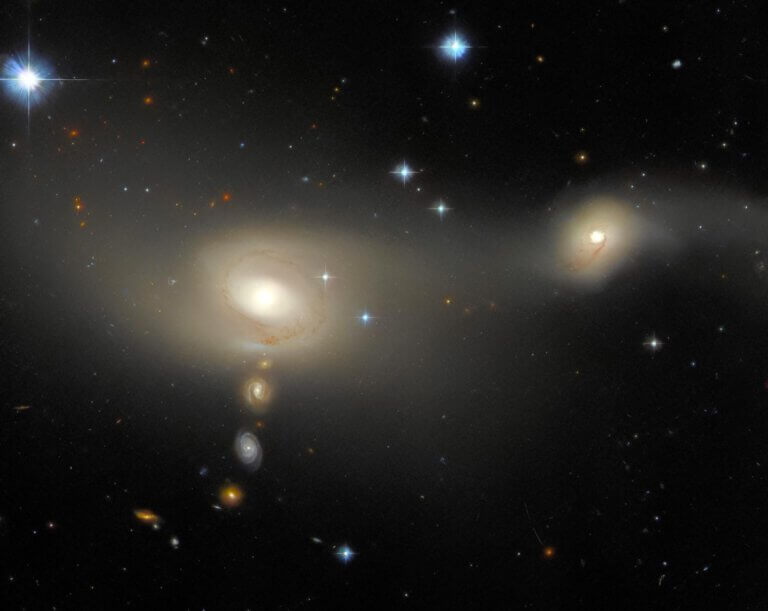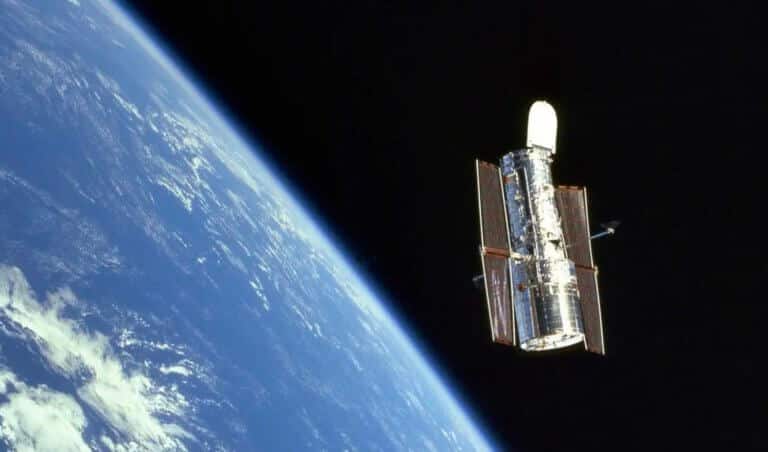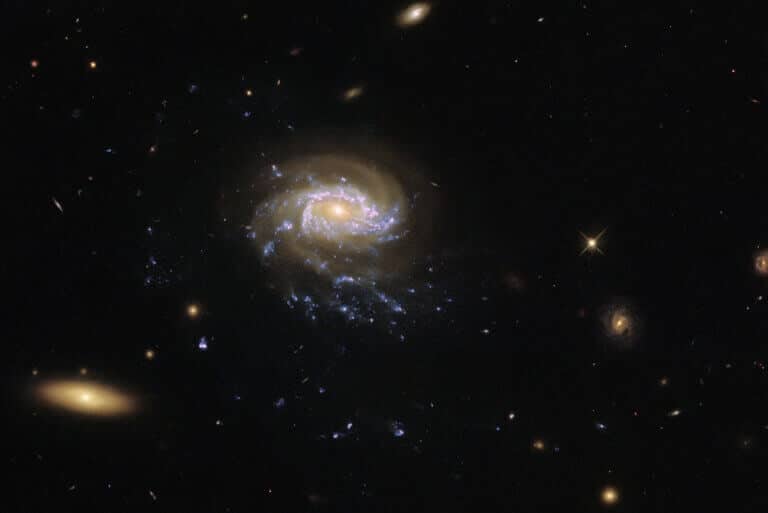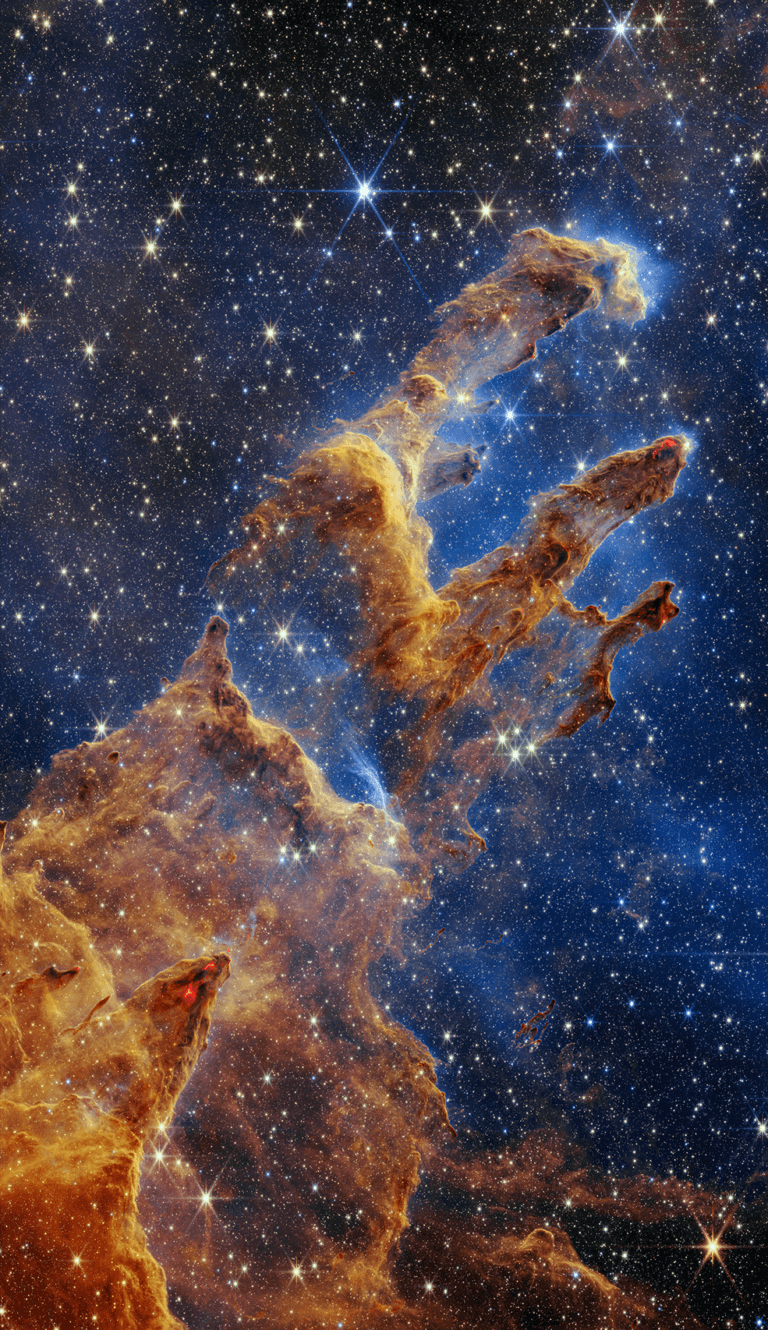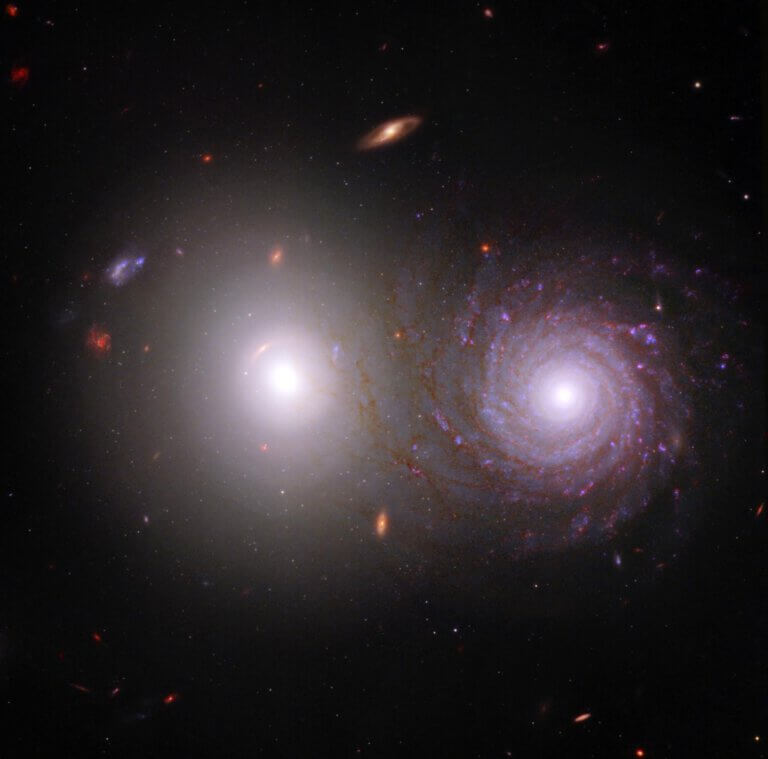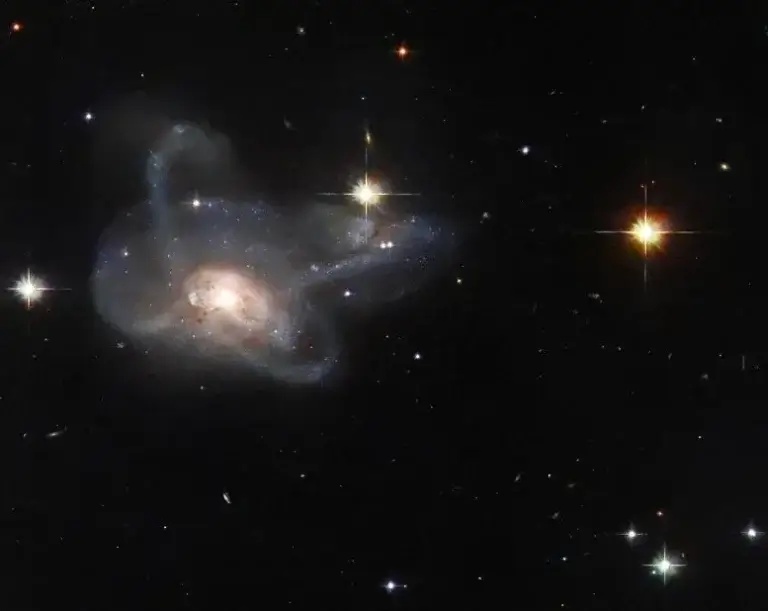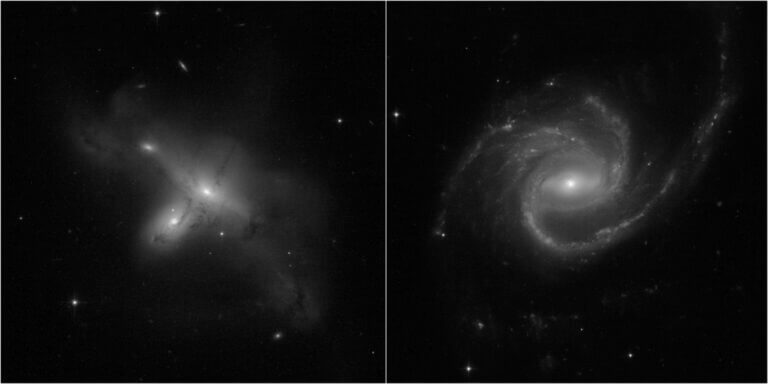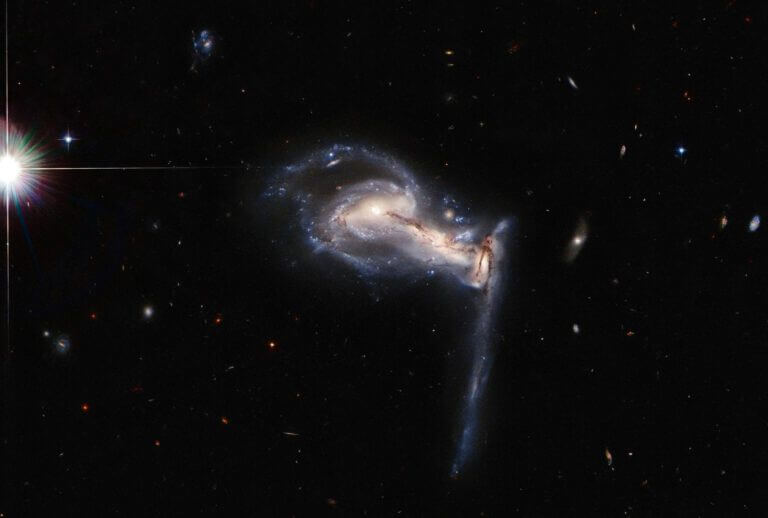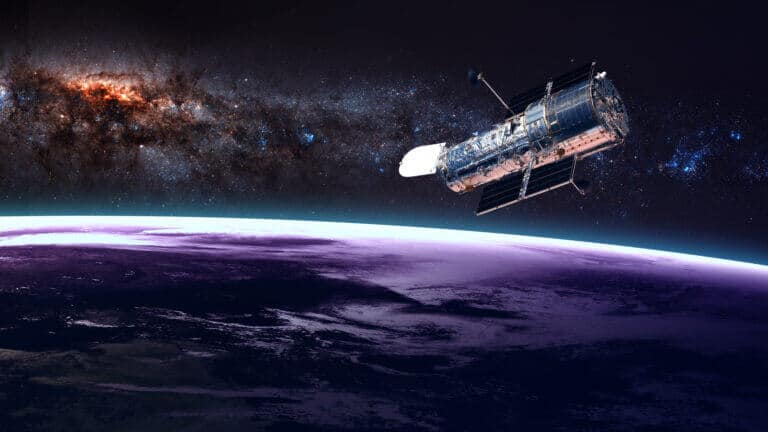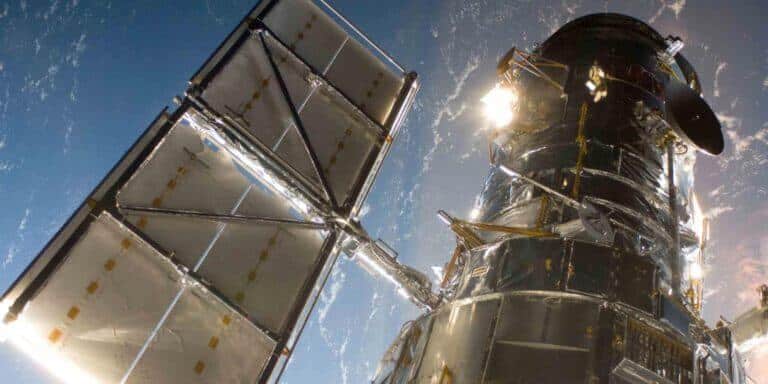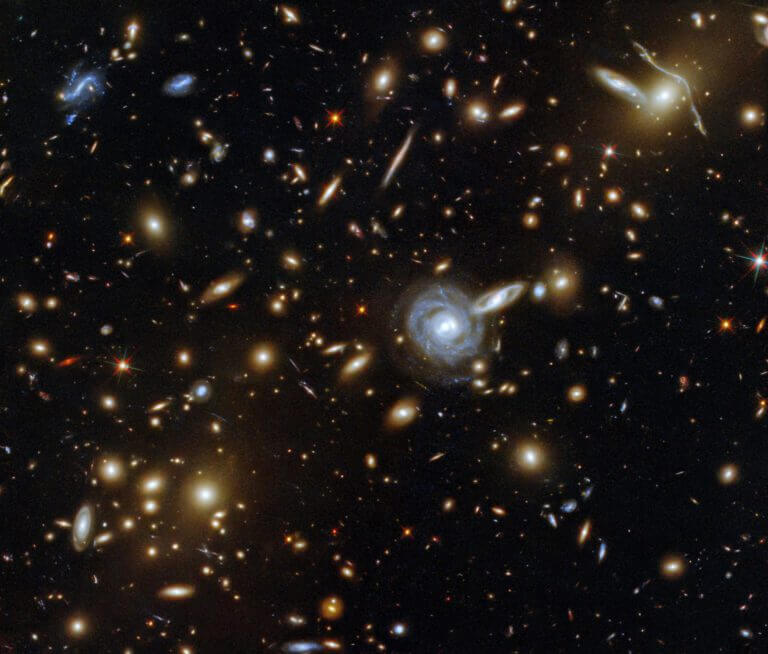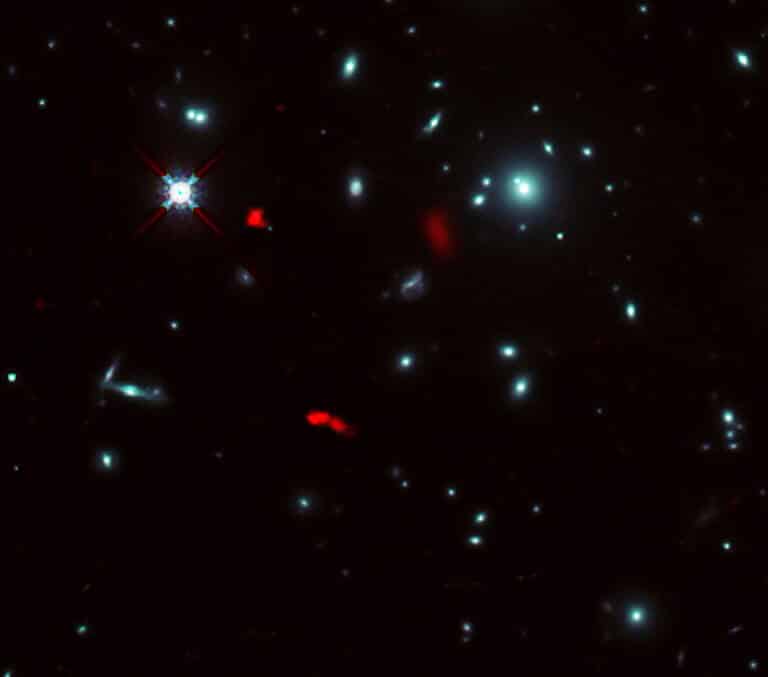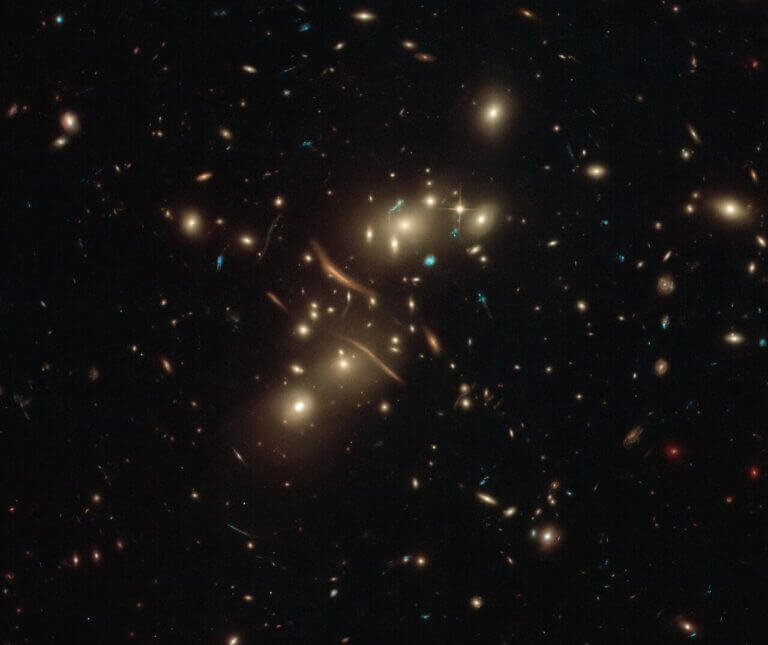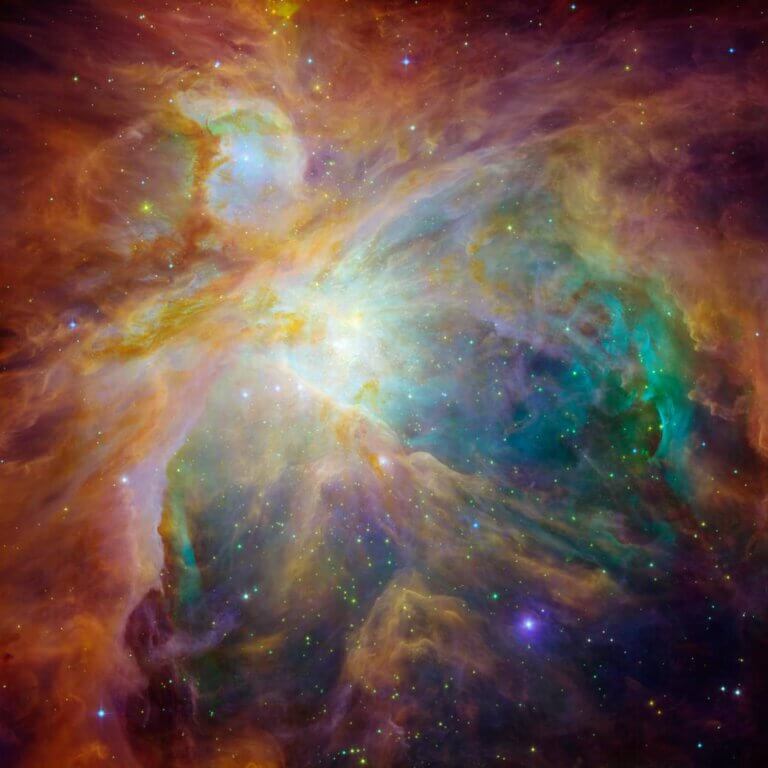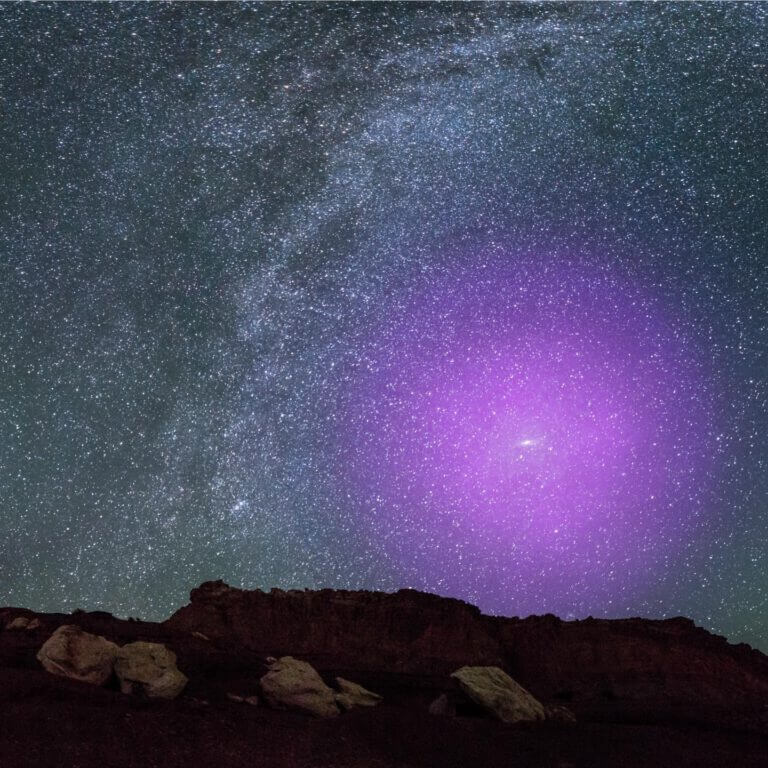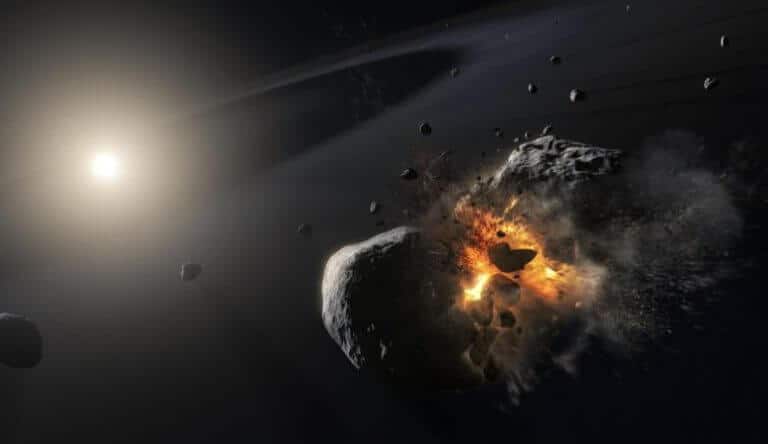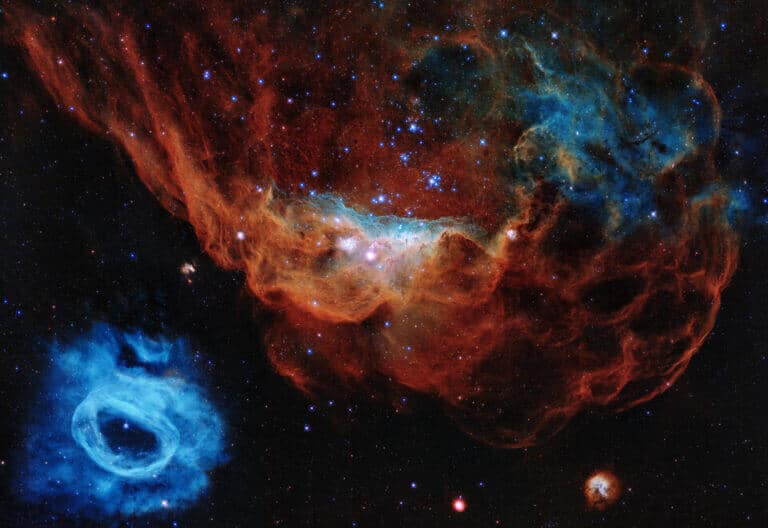Hayadan > Hubble Space Telescope
Hubble Space Telescope
- Avi Blizovsky
- April 26, 2024
- One response
Astronomers re-examined 37,000 images taken by Hubble over 19 years of objects in deep space. The reward was finding 1701 asteroid orbits in the asteroid belt, of which 1031 are uncatalogued asteroids. About 400 of these uncatalogued asteroids are roughly less than a kilometer in size
- Weizmann Institute
- March 28, 2024
- Avi Blizovsky
- March 12, 2024
- 8 תגובות
Webb's measurements provide new light on a decade-long mystery known as the Hubble voltage - the differences in the age of the universe between the Hubble observations and past observations that remain unexplained * Prof. Adam Ries, winner of the Nobel Prize in Physics for the discovery of dark energy heads the project
- Avi Blizovsky
- February 19, 2024
- One response
For the first time, NASA activated a tool designed to discover planets many light years away on an object in the solar system, in a study of the winds of Jupiter
- Avi Blizovsky
- February 18, 2024
- No comments
The discovery of an S-shaped galaxy could revolutionize the understanding of the process of star formation
- Avi Blizovsky
- January 23, 2024
- 4 תגובות
The first galaxies were much less developed than the spiral and spherical galaxies that exist today, which are actually the result of mergers, both because of the stage of development but also because of the conditions that prevailed at the time
- Avi Blizovsky
- January 8, 2024
- 5 תגובות
The two-dimensional reflection of the galaxies in the night sky does not say much about the real distances between the galaxies and between them and the Earth
- Avi Blizovsky
- December 20, 2023
- 2 תגובות
Two of these galaxies close to each other are a rare type of emission line galaxies, because they are undergoing a massive process of new star birth. The others are at different distances but line up nicely in this Hubble shot
- Avi Blizovsky
- May 16, 2023
- 3 תגובות
Astroscale's collaboration with the Momentos company offers NASA a commercial solution that will allow the famous satellite - which recently celebrated its 33rd birthday - to be attached and towed to an orbit that will also be cleaned of space debris
- Avi Blizovsky
- March 11, 2023
- 3 תגובות
A "Medusa Galaxy" with trailing star tentacles hangs in inky darkness in this image taken by the Hubble Space Telescope
- Avi Blizovsky
- October 21, 2022
- No comments
NASA's James Webb Space Telescope captured a rich and highly detailed view of the "Pillars of Creation." A region where new stars form within dense clouds of gas and dust that was previously captured in an iconic image by the Hubble Space Telescope at the start of its operation and returned to after upgrades, along with Strong landmasses
- Avi Blizovsky
- October 10, 2022
- One response
A combination of photographs taken by the two large space telescopes in partially overlapping wavebands made it possible to identify new details about the role of interstellar dust in connections between neighboring galaxies
- Avi Blizovsky
- July 10, 2022
- No comments
Citizen scientists have classified lexicons to help scientists solve an astronomical-scale problem -- how to sort through the vast amounts of information generated by robotic telescopes
- Avi Blizovsky
- August 10, 2021
- 3 תגובות
- Avi Blizovsky
- July 30, 2021
- 2 תגובות
This system - named Earp 195 - appears in the Atlas of Peculiar Galaxies, a list that shows some of the weirder and wonderful galaxies in the universe
- Avi Blizovsky
- July 4, 2021
- 3 תגובות
NASA is taking additional steps to investigate the malfunction that happened to the computer of the Hubble space telescope that began on June 13 and caused the suspension of scientific observations. At the same time as the investigation, NASA is looking at indirect ways to activate the backup hardware integrated in the satellite. The telescope itself and the rest of the scientific instruments were not damaged, and they were moved to a safe state
- Avi Blizovsky
- June 18, 2021
- One response
NASA is working to solve a problem with the Hubble Space Telescope's computer. The computer stopped working on Sunday, June 13, shortly after 16:00 p.m. (23:00 p.m. Israel time). This is already the second malfunction of the aging telescope this year
- Avi Blizovsky
- May 19, 2021
- 9 תגובות
This galactic cluster boasts a variety of directions, with spiral galaxies like the one in the center of this image that are almost visible from above, and some spiral galaxies that are only visible as thin slices of light when viewed from the side. This is in addition to the gravitational lensing effect that allows viewing more distant galaxies
- Ben-Gurion University
- May 4, 2021
- No comments
- Avi Blizovsky
- April 15, 2021
- 24 תגובות
The galaxy cluster has so much mass that it acts as a gravitational lens, causing light from more distant galaxies to bend around it. These distortions may appear in many different forms, such as long lines or arcs.
- Avi Blizovsky
- January 10, 2021
- One response
Gaseous swirls of hydrogen, sulfur and hydrocarbons cradle a collection of baby stars in this composite image of the Orio Nebula as seen by the Hubble Space Telescope and the Spitzer Space Telescope
- Noam Chai
- December 2, 2020
- 15 תגובות
In 2018, a galaxy with a low amount of dark matter was observed. The galaxy defied all existing models but it turns out that the celebration came earlier than expected and two years later it was announced that tidal forces shed the dark matter. Astronomers are breathing a sigh of relief but the scientific community is still confused, what is dark matter?
- Avi Blizovsky
- September 1, 2020
- 7 תגובות
"Understanding the nature of the vast halos of gas surrounding galaxies is extremely important," explained co-researcher Samantha Barak of Yale University. "This reservoir of gas will serve as fuel for future star formation within the galaxy. It also absorbs gas remnants from supernova explosions"
- Ziv Adaki
- May 6, 2020
- 343 תגובות
- Avi Blizovsky
- April 26, 2020
- No comments

